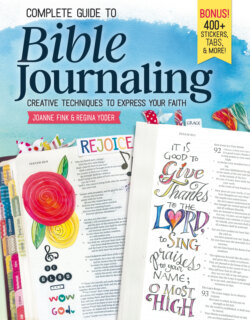Читать книгу Complete Guide to Bible Journaling - Joanne Fink - Страница 12
На сайте Литреса книга снята с продажи.
Оглавление10
•• Complete Guide to Bible Journaling
Choosing a Text Version
The Old Testament Bible text was originally written in
Hebrew and Aramaic and later translated into Greek.
Some Old Testament translations are based on the
early Greek translation of the Hebrew/Aramaic text
rather than the original text itself. The New Testament
was originally written in Greek, the language largely
used at the time. Today, Bible publishers offer
three different types of translation: word-for-word,
meaning-for-meaning, and paraphrased.
Word-for-word translations, such as the King
James Version (KJV) and its modern counterpart the
New King James Version (NKJV), most accurately
follow the original text but can sometimes be difficult
to understand because the English language has
changed considerably in the 400 years since the KJV
was published. The English Standard Version (ESV)
is considered a word-for-word translation while at
the same time taking into account differences of
grammar and syntax between current literary English
and the original languages.
Meaning-for-meaning translations, such as the
New International Version (NIV) and the New Living
Translation (NLT), typically use more up-to-date
language and are easier to understand, but are
sometimes considered interpretative translations of
the text.
Paraphrased translations take a fair amount of
liberty in interpreting biblical text and its meaning.
They are easy to read but the level of accuracy is
not as high as the other types of translations. The
Message and The Living Bible are two of the most
popular paraphrased Bibles.
Many people find it helpful to have more than one
translation of the Bible so that they can compare and
contrast the text for both accuracy and readability.
Regardless of the Bible version you choose, the most
important factor is that you actually use it! As you
spend more time reading the Bible, you will find that
God’s Word becomes increasingly precious to you.
Choosing a Layout
In addition to different translations, Bibles are also
available in different sizes and formats. Most of the
popular versions are available in both hardcover
and softcover versions, in a variety of bindings,
from elegant, embossed leather to colorful
prints. Decide if you prefer a single-
column or double-column layout. If you
have trouble reading the small print,
consider a large print edition. Some
journaling Bibles have dark lines in
the margins, while others have faint
lines or no lines at all. There is even an
interleaved Bible that has an entire blank
page between each page of text. Keeping
all these things in mind will help you select
a journaling Bible that you will love to use.
Pictured from top
to bottom: Standard
double-column Bible,
single-column coloring
Bible, double-column
interleaved Bible, single-
column journaling
Bible, double-column
journaling Bible.
With the growing interest in Bible journaling, more publishers are providing
Bibles with added space for people to express their thoughts in a creative
manner. It is helpful to understand the different options and features
available so you can select a Bible that best meets your needs.
Choosing a Bible
